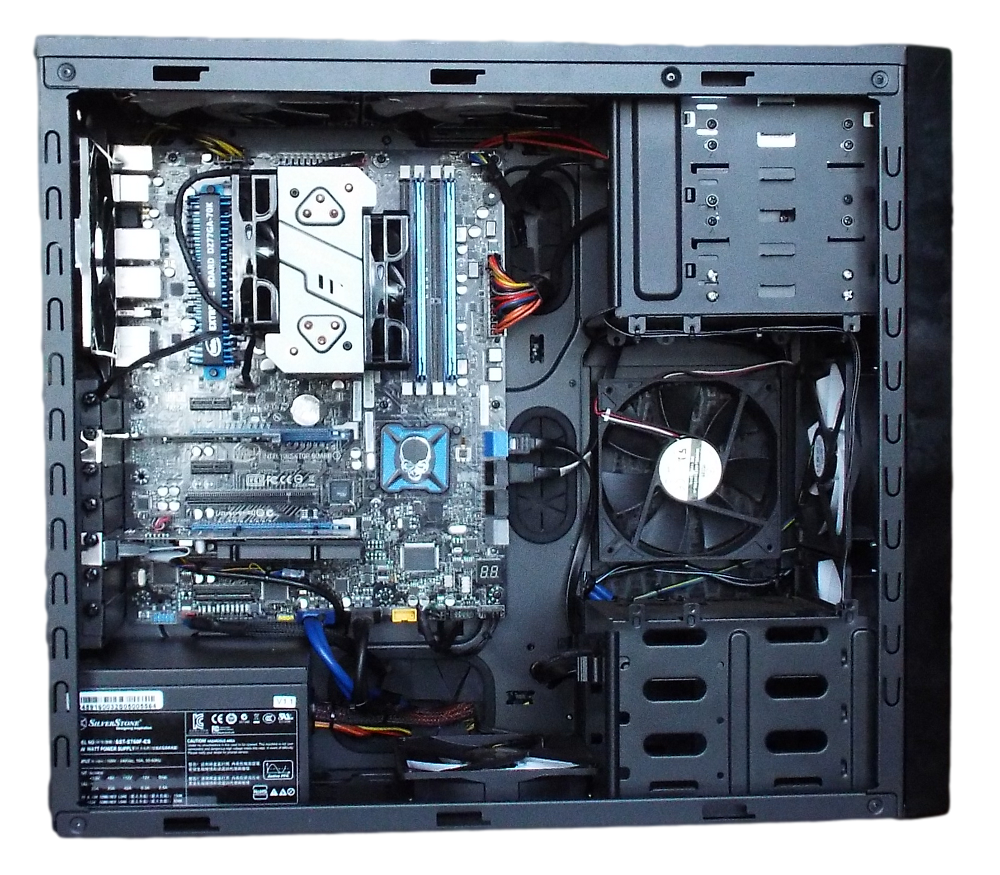TEST BENCH AND PROTOCOL
Today’s analysis will be conducted utilizing our Intel DZ77GA-70K test bench. Clicking on any pictures or benchmarks will open a more easily viewable high-resolution image.
In testing, our main objective is to obtain results as pure and accurate as possible and we want to ensure that no anomalies slip through. Simply put, we want to provide you with the absolute best results the tested hardware can provide. Repetition in testing is standard, and if necessary we may conduct specific tests in Windows 7 ‘safe mode’ to ensure that the OS has little to no influence on the end result.
In order to validate and confirm our findings, testing is supported by industry accepted benchmark programs. All results are displayed through screen capture of the actual benchmark’s results for better understanding of the testing process by the reader. Our test system is comprised as follows:
Here we see the Mach Xtreme SATA-DOM SSD plugged right into one of the primary SATA 6.0 GB/s ports on our Intel Extreme DZ77GA-70K motherboard, and connected to a spare Molex 4-pin power lead.
After initializing the drive and formatting, the SATA-DOM shows up in our disk management screenshot as healthy and having 29.50GB of user-available capacity.
BENCHMARK SOFTWARE
The software we will be using in today’s analysis is typical of most of our reviews, and consists of ATTO, Crystal DiskMark, AS SSD and Anvil Storage Utilities. We rely on these as they each have a way of supporting one another, yet at the same time, adding a new performance benchmark to the total picture. The combination of these benchmarks provides a more complete picture of a drive’s overall performance and capabilities. Much of the software is free, and can be downloaded simply by clicking on the title (in orange), as each is linked to the corresponding software’s download site.
In our Crystal Disk Info screenshot below, we see that the SATA-DOM is a new product with zero hours and only a single (this) power-on event.
We also see that under “features” that S.M.A.R.T. attributes (drive monitoring) and TRIM are enabled.
 The SSD Review The Worlds Dedicated SSD Education and Review Resource |
The SSD Review The Worlds Dedicated SSD Education and Review Resource | 


Yikes!!
That random write is really really bad. Like jmicron 602 bad. Can’t imagine how this thing would stutter if OS was installed in there. A proper controller would fix that easily..
But i guess this is meant more for caching and READ only enviroments (POS systems?)…
Bear in mind that this is only a SATAII device. Most of the newer controller technology and NAND improvements are going into SATAIII devices.
True, but there are far far better SATAII controllers (like sandforce 1st gen) that have no issues with random speeds.
But again, this is a very simple controller and hence random speeds suffer.